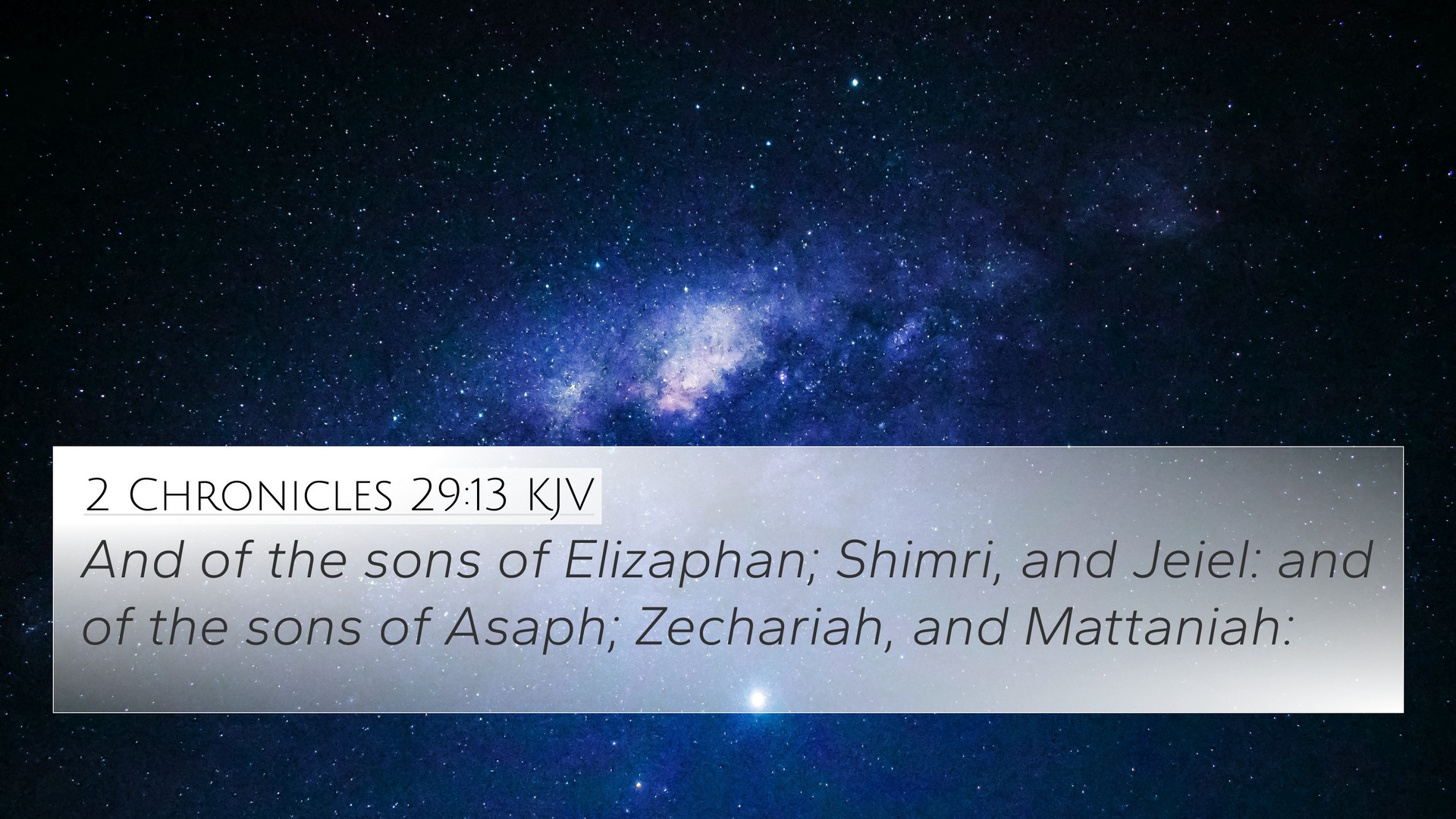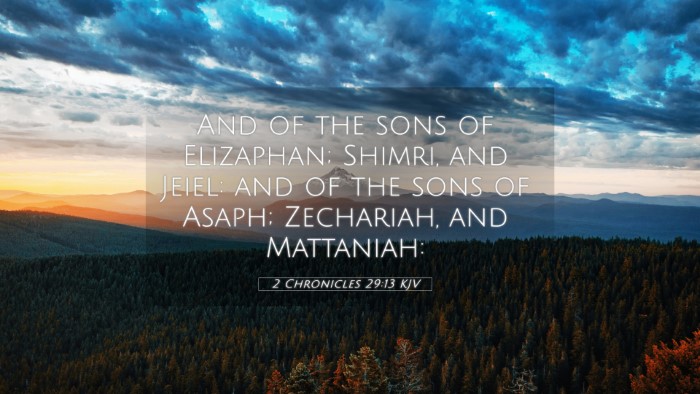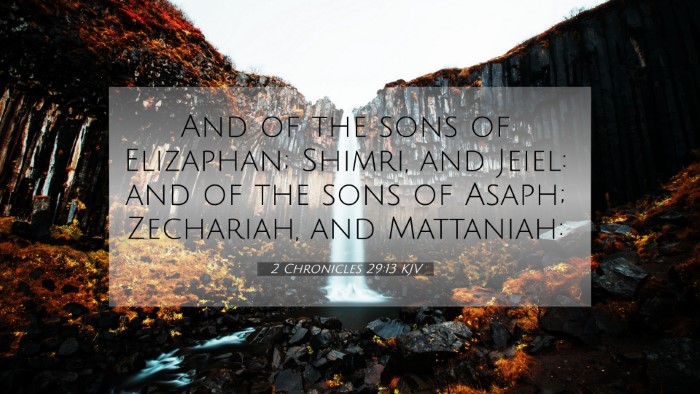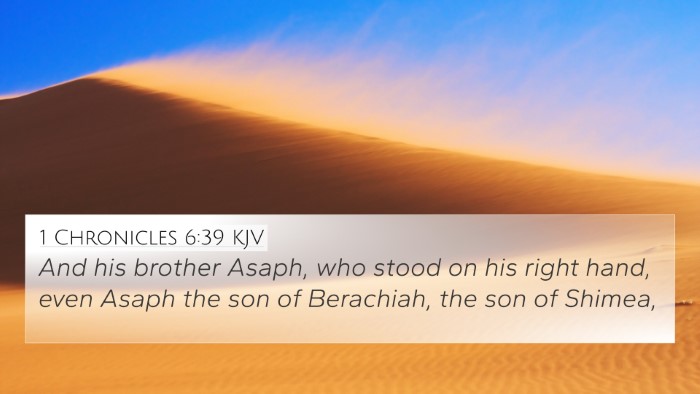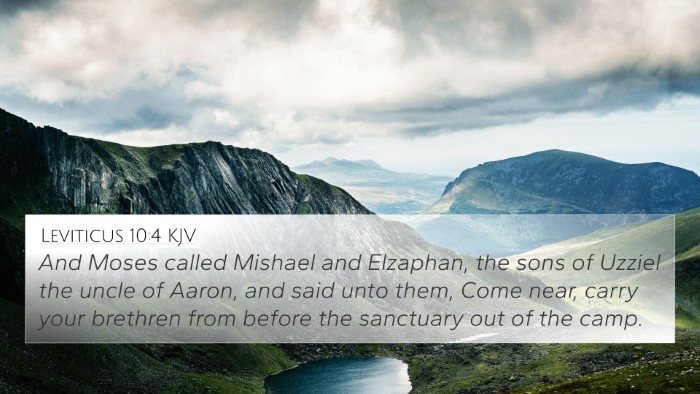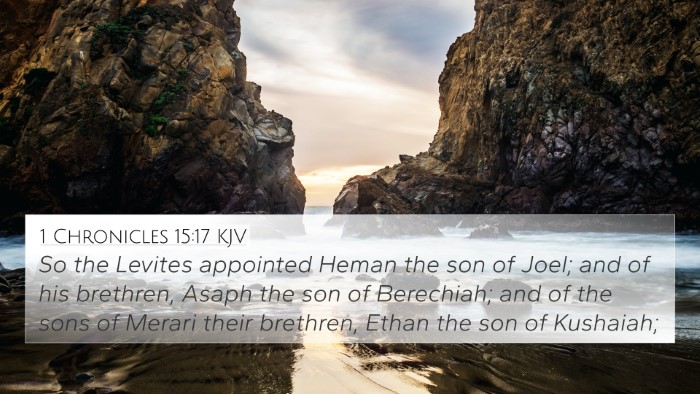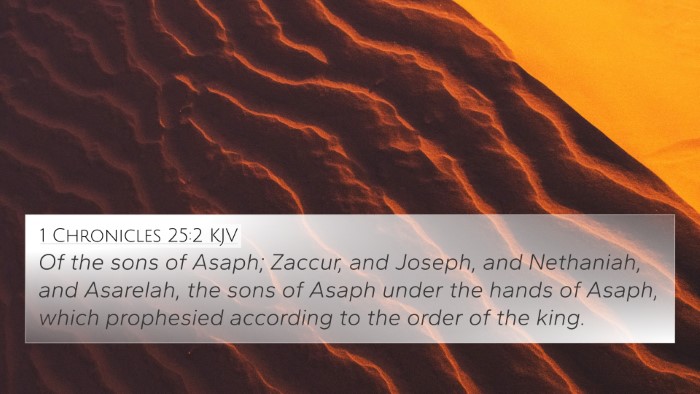Understanding 2 Chronicles 29:13
Verse Context: 2 Chronicles 29:13 states:
"And of the sons of Elizaphan, Shemaiah; and of the sons of Asaph, Zechariah; and of the sons of Heman, Jahiel; and of the sons of Jeduthun, Shimei."
This verse lists the names of the Levites who were appointed to assist in the restoration of temple worship under King Hezekiah. The organization of temple worship reflects the importance of orderly worship in Israel.
Insights from Commentaries
Matthew Henry's Commentary:
- Henry emphasizes the significance of the priests and Levites in the reestablishment of true worship. The names mentioned reflect God's providence in restoring His worship through faithful servants.
- He also mentions how the Levites were instrumental in guiding the people back to God after a period of neglect and apostasy, signifying the importance of proper worship and leadership in the community.
Albert Barnes' Notes:
- Barnes points out that this listing serves not only as an organizational aspect but also signifies the continuity of the Levitical priesthood through generations, which is crucial for maintaining the traditions of worship.
- He notes that mentioning the names serves as a verification of leadership accountability within the priestly ranks, highlighting the essential role they played during this spiritual renewal.
Adam Clarke's Commentary:
- Clarke elaborates on the character of those named, underlining their qualifications and roles in temple service, which were vital for the spiritual health of the nation of Judah.
- He also draws connections to the practices of worship, suggesting that assembling such leaders was fundamental for restoring the sanctity of the temple and ensuring a genuine return to God.
Cross References
Thematic analysis and cross-referencing this verse reveals several connections throughout the scriptures:
- 1 Chronicles 6:31-48: Lists the Levitical cities and families, illustrating the lineage and ongoing worship practices.
- 2 Chronicles 30:16-22: Discusses the role of the Levites during Passover, showing their function in communal worship.
- Ezra 3:2: Highlights the restoration of the altar by Joshua and his fellow priests, paralleling the movement of Hezekiah’s reforms.
- Nehemiah 12:44: Details the duties of priests and Levites after the return from exile, linking back to their roles in worship.
- Malachi 2:4-7: Emphasizes the importance of priestly instruction and fidelity, showcasing ongoing themes of worship and leadership.
- Hebrews 7:11-17: Discusses the priesthood in the context of Christ, forming a deep connection between the Old Testament practice and New Testament fulfillment.
- Luke 1:5-13: The theophany in the context of priestly duties as Zechariah serves in the temple, illustrating ongoing divine communication with His people.
- Revelation 5:10: Proclaims believers as a kingdom and priests, symbolizing the continuity and evolution of priesthood from the Levitical order to the Christian context.
Thematic Connections
This verse can lead to a deeper understanding of the themes of:
- God’s Faithfulness: Throughout history, God raises leaders to restore worship and guide His people.
- Order in Worship: The structure presented in this verse underscores the significance of organization in approaching God.
- Accountability and Leadership: The named individuals represent the importance of responsible leadership in spiritual matters.
- Restoration: Hezekiah's reforms highlight a recurring biblical theme of returning to God after periods of waywardness.
- Worship as Community: Emphasizes the collective aspect of worship and the role of designated leaders in maintaining it.
Conclusion
The insights from 2 Chronicles 29:13, alongside its cross-references, help further deepen our understanding of the essential principles of worship, accountability, and community in the biblical context. By examining these themes through cross-referencing other scripture, one can gain a more profound appreciation for the continuity of God's plan for His people.
For those interested in studying further, using tools for Bible cross-referencing, such as comprehensive Bible concordances and reference guides, can enhance one’s journey into the depths of scripture.
